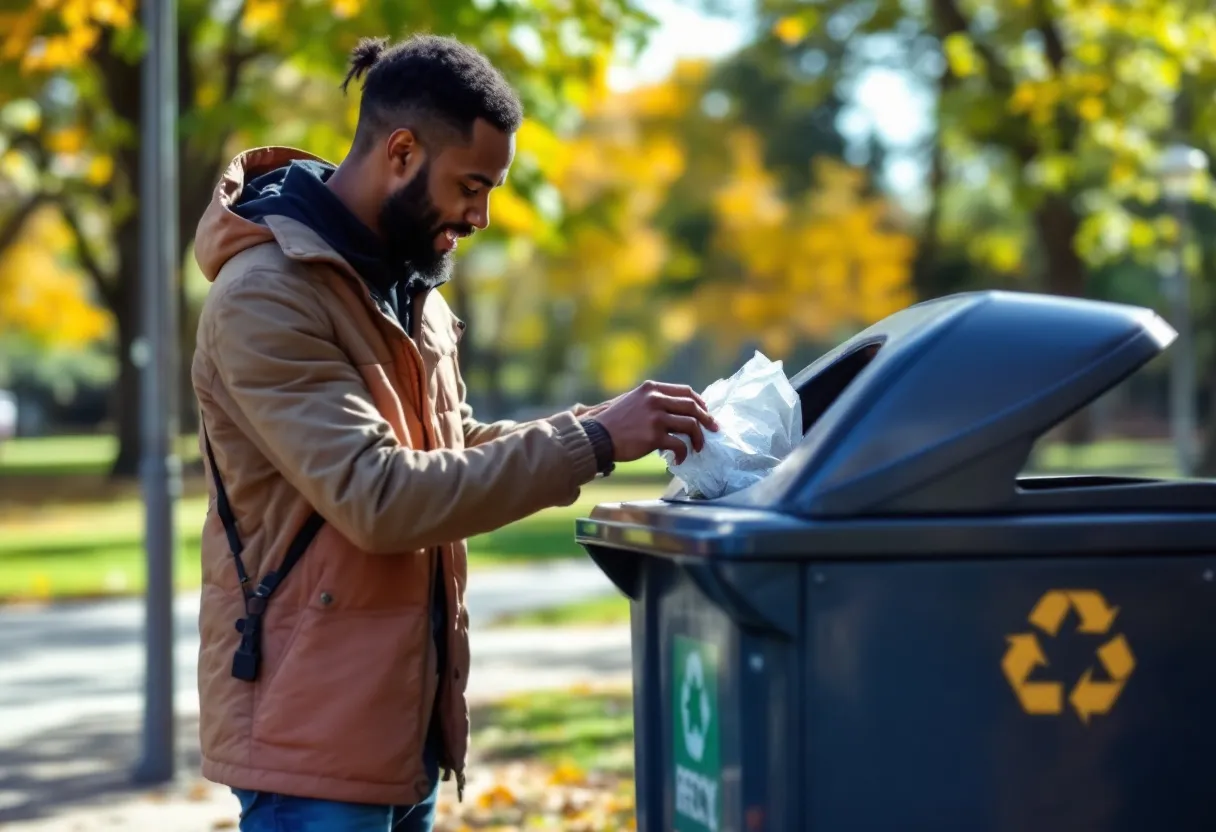Here’s the thing: we all know littering is bad. It’s unsightly, it harms wildlife, and it costs a fortune to clean up. Yet, it persists. As someone who’s spent years working on waste management, both in research at the CNRS and practically with local municipalities here in Lyon, I can tell you it’s a frustratingly complex problem. It’s not just about laziness or a lack of bins. It’s about psychology.
The Mind of a Litterer: Unpacking the Psychology
Why do people litter? It’s not a simple question. Let’s break it down.
- Diffusion of Responsibility: “Someone else will pick it up.” Sound familiar? It’s a classic case of assuming someone else will take care of the problem. It’s the bystander effect, but with a cigarette butt.
- Lack of Ownership: People are less likely to litter in places they feel a sense of ownership over. Think about it: you wouldn’t trash your own living room, would you? But a public park? Different story.
- The “Broken Windows” Theory: An environment that already has litter sends the message that littering is acceptable. It’s a self-fulfilling prophecy of squalor. I’ve seen this play out firsthand in neighbourhoods struggling with upkeep.
- Convenience (or Lack Thereof): Okay, sometimes it is about laziness. If a bin is too far away, or overflowing, people are more likely to just drop their trash. Let’s be honest.
- Deindividuation: In crowded, anonymous spaces, people feel less accountable for their actions. It’s easier to litter when you feel like just another face in the crowd.
It’s a cocktail of factors, really. And it’s rarely a conscious decision. It’s often a split-second thing, a habit, or a reaction to the environment. So how do we break these ingrained patterns?

Nudging Towards a Cleaner Future: Strategies for Behavior Change
Here’s where it gets interesting. We can’t just yell at people and expect them to change. (Trust me, I’ve tried. It doesn’t work). We need to be smarter. We need to tap into those same psychological drivers, but in a positive way.
Changing the Environment
This is HUGE. Think about it: if the environment encourages littering, we need to flip the script.
- More Bins, Strategically Placed: Obvious, but crucial. Make it easy to do the right thing. And make sure the bins are emptied regularly! Overflowing bins are a magnet for more litter.
- Cleanliness Begets Cleanliness: Regularly cleaning up litter sends the message that the area is cared for. It disrupts the “broken windows” cycle. I’ve worked with municipalities that saw dramatic improvements simply by increasing street cleaning frequency.
- Design Matters: Make bins attractive and user-friendly. Consider different types of bins for different types of waste (recycling, compost, etc.). No one wants to touch a disgusting, overflowing bin.
Appealing to Social Norms
Humans are social creatures. We care what others think. We can use this to our advantage.
- Highlighting Positive Behavior: Instead of focusing on how much people litter, focus on how much people DON’T litter. “90% of people in this park dispose of their trash properly!” is a much more effective message than “Don’t litter!”
- Social Proof: Showcase images of people doing the right thing. Seeing others behaving responsibly makes it more likely that others will follow suit.
- Community Engagement: Organize community clean-up events. Get people involved in taking care of their environment. It fosters a sense of ownership and responsibility. This is something I’ve seen work wonders at the local level.
Targeted Messaging
Not all litterers are the same. Tailor your message to specific groups.
- For Smokers: Provide portable ashtrays or strategically placed cigarette butt receptacles. Make it convenient to dispose of cigarette butts properly.
- For Dog Walkers: Provide dog waste bags and bins in parks and along walking trails. No one wants to carry a bag of poop around, so make it easy for them.
- For Fast Food Consumers: Work with restaurants to provide clearly marked and easily accessible bins near their establishments. And encourage them to use eco-friendly packaging.
It’s all about understanding the motivations and barriers of different groups and addressing them directly.
The Role of Education and Awareness
While nudges and environmental changes are important, education still plays a role. People need to understand the consequences of their actions.
- School Programs: Teach children about the importance of waste reduction and responsible disposal from a young age. Instill good habits early.
- Public Awareness Campaigns: Use creative and engaging campaigns to raise awareness about the impact of litter on the environment and human health.
- Transparency and Information: Provide clear and accessible information about recycling programs and waste management policies. People are more likely to participate if they understand the system.
Long-Term Change: A Shift in Mindset
Ultimately, changing littering behavior is about more than just cleaning up the mess. It’s about fostering a sense of environmental responsibility and a collective commitment to a cleaner, healthier future. It is not just about the laws but about self-regulation.
This requires a multi-faceted approach, combining environmental changes, social nudges, targeted messaging, and education. It’s a long game, but it’s a game worth playing. Because a cleaner environment isn’t just aesthetically pleasing, it’s essential for our well-being and the well-being of future generations. And that, my friends, is something worth fighting for.
